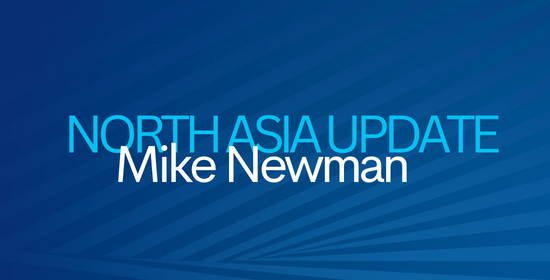HunterNet North Asia report – April 2025
As some of you may be aware, I spent the first three weeks of April in Australia meeting with countless North Asian companies. In that time I met with both ambassadors of Japan and Korea in Canberra.
No prizes for guessing that the North Asians are anxiously waiting the outcome of the federal election. Both ambassadors expressed that they want to predictability in policy (especially coal and gas) more than anything else. They said emphatically that “we don’t need your money.” We just need to provide a consistent investment pathway.
Perhaps adopting a more cautious tone, most of the major Japanese trading houses in Australia said they have blank whiteboards with respect to new large-scale opportunities in Australia. Our policy settings are just not competitive on a global basis.
The yen has started to firm against the US$ on the back of hope that a favourable trade deal will be reached, especially after the visit from Secretary Bessent.
I have pointed out they (the trading houses) could seek large scale opportunities in critical minerals as investors into badly bombed out stocks and to reframe the thinking as strategic investors and off takers. A 20% stake in NSW company Cobalt Blue will run $5mn. Petty cash to Japanese or Korean investors. I’ve explained that these are merely call options at cheap prices to hedge a global supply chain where ownership provides price stability on extraction. Critical minerals stocks would likely catapult in value as the market would see strategic investment as a real sign of commitment, making capital raising more likely. Presently the minuscule liquidity in these stocks means that institutional investors find it next to impossible to participate. This could change things. So watch this space.
PM Albanese’s $1.2 billion critical minerals plan is chicken feed in the overall scheme of getting scale across a variety of resources for stockpiling. $500m is a starting price for getting a mine properly functioning to production and double it again for the processing. The positive in the message is at the very least, is signals of strategic intent are headed in the right direction. So what form will the subsidies and support mechanisms face?
Clean energy (hydrogen/ ammonia) has become a blue conversation, most conceding green hydrogen in Australia is a pipe dream over the next decade. The Port of Newcastle is naturally placing itself at the top of the foodchain in an Australian context. Ambassador Suzuki said the Japanese investors were extremely annoyed when funding for Stanwell was terminated by the Crisafulli government which led to the termination of the CQH2 project in Gladstone.
Housing is very clearly on the agenda. Japanese and Korean capital continues to flood our shores. Mitsubishi Estate is so well established it is not even paying commissions on any of its transactions. Although, as a cautionary tale, Mitsubishi Estate is committed for only the next five years.
The Japanese continue to have a over-forest problem. 70% of the country is blanketed in forests, much of it aging and no longer behaving as a carbon sink. The Japanese government is offering JPY40/kW subsidies fixed for 20 years on biomass <2MW scale to literally ‘cut down’ on aging forests. In 1966, Japan had around 15 million ha of forests but this now exceeds 25 million as of today. Many prefectural governments are looking at investment in this space.
On the Korea front, the presidential election is to be held June 3rd so do not expect much in the way of movement at the station by the corporates. Note the odds are on the Democratic Party to win, which has an agenda more focused on renewables and hydrogen.
In other news, tourism to Japan continues to explode. In 2024, a record 920,200 Australians visited Japan, surpassing the previous high and marking the highest number of Australian arrivals ever recorded in a single year. Up from 613,000 in 2023. March 2025 recorded 88,000 Aussies. The Japan National Tourism Organization (JNTO) expects Australian visitor numbers could surpass the one million mark.







